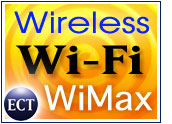
Hot spots for making wireless connections to the Internet are popping up in places like MacDonald’s, Starbuck’s and Panera’s, but WiFi remains just a side dish for outfits trying to make a buck from the technology.
The hot spots are a premium service used to attract customers to their sponsors’ locations, explained Roberta Wiggins, an analyst with the Yankee Group in Boston. “At this point, the main money is the hotel being able to sell additional hotel rooms; the coffee shop being able to attract more customers and selling more coffee,” she told TechNewsWorld.
That’s also been the experience of Chantry Networks, an infrastructure builder for wireless LANs based in Waltham, Massachusetts. “All the companies that we’ve talked to about hot spots already have some kind of streaming revenue,” senior director of product management Luc Roy told TechNewsWorld.
He said that there are two hot-spot models currently in the market: the outsourced model and the wholesale model.
With the outsourced model, a sponsor goes to a service provider to set up and operate the hot spot, Roy explained. That model is used in eateries like MacDonald’s.
Traveler’s Oasis
“In talks with MacDonald’s, we’ve learned that hot spots are helping their cause in retaining customers,” he said. “It’s keeping customers inside their restaurants and giving them a little more business.”
He explained that it was thought that people would want a quick bite and quick access to the Internet through the hot spot, but, in fact, a lot of the usage is by people who travel a lot — sales people, for instance — who want to do some business between meetings while they obtain some sustenance.
Although the outsourced model is the most popular right now, a wholesale model has begun to emerge, Roy noted.
Selling Access
That model is being developed by businesses that have a right-of-way and a captive audience — malls, for instance, or a ferry system. Those businesses are installing wireless infrastructure, then turning around and selling network access to service providers like mobile phone carriers.
While WiFi hot spots in restaurants are aimed at the general public, niche markets have begun to emerge around modes of transportation. Siricomm, for instance, will be rolling out a private wireless network for truckers in September. It is installing hot spots at some 255 Pilot Travel Centers and is talking with states about setting up shop for its US$49.99 a month service at weigh stations.
Roy noted that Chantry has a Carribean client who offers wireless Internet access to vessels moored at his marina as a means to differentiate his business from his competitor’s.
Wider Coverage, Bigger Profits
If WiFi is to be profitable as more than a sideline, it will have to get outside the coffee shop, contends Bert Williams, vice president for marketing for Tropos in Sunnyvale, California.
Tropos builds wireless networks that span neighborhoods and entire cities in some cases. That kind of coverage can be turned into a profitable, standalone business, Williams asserted.
“We have some ROI numbers that actually show that service providers can be quite profitable,” he told TechNewsWorld.
“We can install an infrasturcture that is extremely competitive with cable or DSL and offer additional mobile services on the same infrastructure as well,” he said.
Flawed Model
“It’s a pretty compelling value proposition for the service provider, and they have the ability to make a nice profit,” he added.
He maintained that it was not surprising that some of the emerging hot spot operators are finding themselves in hot water. “It’s a fundamentally flawed business model,” he said. “It’s the Internet equivalent of pay phones.”
“When cellular came around, pay phones went away,” he observed. “When things like metro-scale coverage becomes available, the hot-spot model is not going to prove to be a viable one because people don’t want to go to some place to obtain service. They want the service to be at the places they want to be.”











































